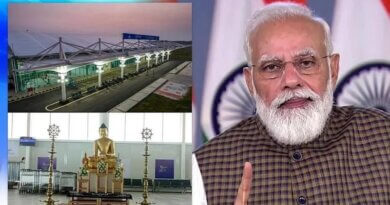Nomads at the Frontline: Video Reveals Ladakhis Clashing with PLA on Disputed Border
By Tsering Choephel

A screenshot of the confrontation between herders and PLA soldiers.
DHARAMSALA, 1 Feb: A video widely circulating on social media shows Ladakhi nomads in a confrontation with several Chinese armies equipped with armoured vehicles. According to media reports, the incident occurred on January 2 in the Kakjung area of the Nyoma constituency, adjacent to the Chushul Valley in Ladakh close to China-occupied Tibet near the long-contested border between India and China— known as the Line of Actual Control (LAC).
The nomads, grazing their herds, were halted by patrolling People’s Liberation Army (PLA) units at LAC Patrolling Points 35 and 36. The LAC, a 3,388 km long border divided into eastern, middle, and western sectors, remains contested between India and China.
Konchok Stanzin, the Chushul Councillor, stated to The Wire, “Livelihoods of locals have been taken away in the name of buffer zones and patrolling points. Our nomads are struggling for their land.” Before China invaded Tibet, Changpas, a Ladakhi nomadic tribe freely roamed the vast expanse of Changthang, part of which is in Indian territory. However, their movement has faced further restrictions due to rising border tensions and increasing PLA transgression into Indian territory.
In the video, a herder can be seen shouting at a group of PLA soldiers, “Why have you come here? Why have you brought your vehicles here? This is our ancestral land; we graze our livestock here.”
Stanzin, in his post accompanying the video, stated, “See how our local people are showing their bravery in front of the PLA, claiming that the area they are stopping is our nomad’s grazing land. PLA is stopping our nomads from grazing in our territory. It seems to be a never-ending process due to different lines of perceptions.”

The LAC, particularly the western sector in Ladakh, is most susceptible to China’s incursion strategy known as ‘salami-slicing,’ employing divide-and-rule tactics to encroach on land.
Bilateral relations between the two Asian giants plummeted following the 2020 clash in the Galwan Valley, resulting in the deaths of 20 Indian soldiers and four Chinese soldiers, according to Chinese official data. As per media reports, several other skirmishes between Indian and Chinese troops along the LAC were recently revealed, with two incidents reported between September 2021 and November 2022.
Despite numerous high-level dialogues, no consensus has been reached on the long-standing border dispute, and military tensions persist in border areas.
The incident captured in the latest video is not a new occurrence. Several similar cases of PLA troops intercepting Indian herders from grazing have been reported, highlighting the region’s sensitivity to border friction.
The Indian government’s denial of territorial loss along the LAC to China’s incursion, especially after the 2020 clash, is questioned by several reports. A ground report by VICE in the same year stated that multiple sources, including councillors and nomads, complained that China sends its nomads into Indian areas, followed by the construction of roads, helipads, and other infrastructure.
Ladakhi nomads are reportedly restrained from herding near the LAC by Indian authorities as a precaution to avoid conflict with the PLA. Sonam Tsering, a local in the region, stated, “The Indian government should take the nomads into confidence. The army and paramilitary forces deployed at the post do their duty and move on, but the nomads stay. They are the real guardians of the border.”
With China’s massive military buildup along the border from the Tibetan side becoming explicitly threatening, India has also increased its investment in border defence in recent years along the western sector in Ladakh and the eastern sector, where China claims the Indian state of Arunachal Pradesh as its own.
India’s External Affairs Minister, S Jaishankar, has previously stated, “We have maintained our position that if China disturbs the peace and tranquility in border areas, it will impact our relations. Our relationship is not normal; it cannot be normal as the border situation is not normal.”
China’s Ministry of National Defence spokesperson, Wu Qian, recently criticised India’s stand, saying, “It is unwise and inappropriate for the Indian side to insist on linking the border situation with bilateral relations,” downplaying the ‘border dispute’ with India as a ‘legacy issue.’






